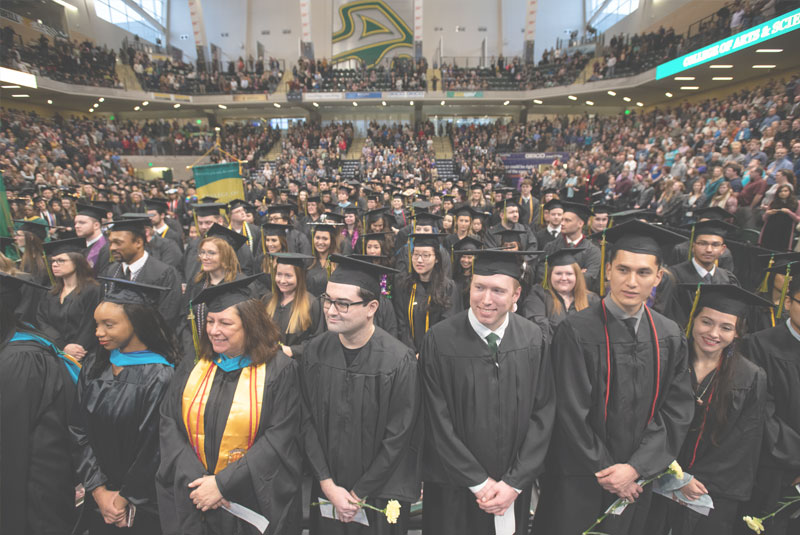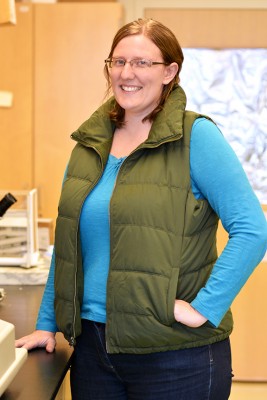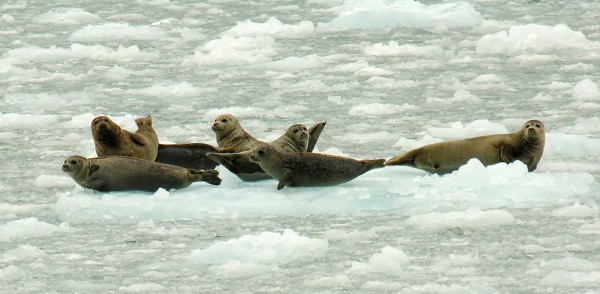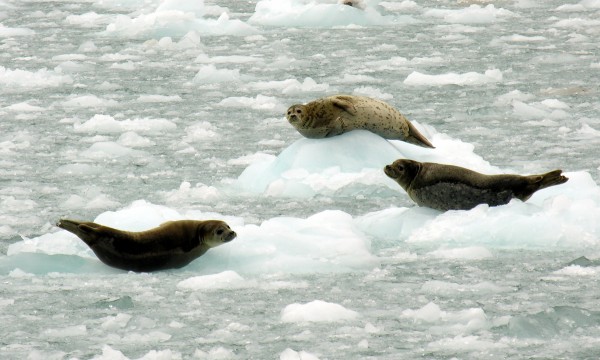UAA scientist and Aleutian subsistence hunters partner on harbor seal study
by Kathleen McCoy |
If there were a mantra among scientists studying Alaska and its wildlife, it might be something like "Where's the data!"
Usually, either there aren't any, or what are available is old or just not very good.
In subject area after subject area, scientists confront the lack of historical baselines that would help them better assess and understand what is happening with a given species today. This reminds me of recovery efforts after the 1989 Exxon Valdez oil spill. How could scientists tell if Prince William Sound shrimp were on the rebound if they never knew what the shrimp baseline was to begin with?
Now, we have events like climate change, coastal erosion, ocean acidification and the Great Pacific garbage patch, among others-all potentially stressing Alaska habitat and regional species.
This week I had the opportunity to visit with Amy Bishop, a postdoctoral fellow at UAA who is trying to get some of that missing data. Bishop and researchers like her are lucky; the National Oceanic and Atmospheric Administration has provided grant money to eight different groups to help fill in some of these information gaps for pinnipeds-harbor seals, sea lions and fur seals. The Alaska Native Harbor Seal Commission is one of the grant recipients.
Under the auspices of the harbor seal commission, and under the research direction of UAA virologist Eric Bortz and marine mammal biologist Jennifer Burns, Bishop is working to gather details on health and disease levels for harbor seals in coastal Alaska, especially in the Aleutians.
Bishop has a one-year job to partner with Aleutian subsistence hunters so both parties can share information on harbor seals that the hunters have harvested for their own use. This includes recording physical details like mass, girth and length, and also sharing with Bishop small tissue samples from the liver and kidney. Hunters are also asked to tie off the stomach at both ends and provide it for diet analysis.
For UAA, Bishop is helping to run tissue analysis for viruses, bacteria and parasites. "We're testing for a broad spectrum," said Bishop, "pathogens we know have affected harbor seals in other areas of their range, or in different parts of Alaska."
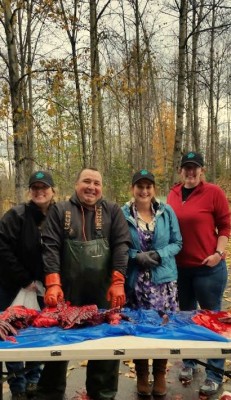
Amy Bishop in red sweater at right, after participating in a recent biosampling demonstration at the Alaska Native Heritage Center. (Photo provided by Amy Bishop / University of Alaska Anchorage)
What might that look like? How about influenza? Bortz is an expert on flu and helps monitor global outbreaks as a part of the Center for Research on Influenza Pathogenesis. Since influenza is a known zoonotic pathogen (leaps between species), knowing if it is in Alaska harbor seals would be salient information for subsistence hunters; they could learn safe handling techniques. And even if the disease hasn't manifested in symptoms that hunters can see, knowing the pathogen is present could key hunters into alerting scientists when they do detect symptoms.
Another pathogen they'll test for is phocine distemper virus, a relative of canine distemper virus. According to Bishop, it has led to massive die offs of harbor seals along the Atlantic coast. The latest papers she has read indicate a presence in approximately one percent of Pacific harbor seals in Alaska.
"Other research groups have screened for disease in Southeast and Southcentral Alaska, but we really don't have the baseline information for the Aleutians," she said. "We want to know what's going on out there."
The partnership between Alaska Native subsistence hunters and research scientists is invaluable. "I've studied pinnipeds for almost a decade; I can tell them all day long about the science," Bishop said. "But I'm new to the Aleutians and new to their culture. In these regional locations, they know their seals backwards and forwards."
There are several ironies to this story. For one, the Alaska Native Harbor Seal Commission started this work in 1996. Funding ran out in 2006. This is an example of why gaps in baseline data happen.
But in that valuable decade, the commission managed to certify 150 Alaska Native technicians in 40 villages. This single year of NOAA funding is the first chance the commission has had to continue its data collection. While harbor seals are not in immediate crisis, their value as a cultural, spiritual and nutritional resource for subsistence hunters makes knowledge of their wellbeing critical.
The other irony is that Bishop, who grew up in Chicago and was obsessed with marine biology all through high school, never even saw an ocean until she was 20. Nonetheless, her passion persisted until she earned her doctorate in England studying gray seals in the North Sea.
This is one reason why she truly values the opportunity to travel to Aleutian villages and talk with school kids. She welcomes them at her village bio-sampling trainings, and if age 18, they can even become certified samplers.
Who knows which one will share her passion for marine mammals, and perhaps one day combine traditional knowledge with scientific research skills to finally tell the full story of Alaska's harbor seals and other pinnipeds.
NOAA grant number is NA15NMF4390169. For questions on the research project, contact biosampleANHSC@gmail.com. A version of this story by Kathleen McCoy appeared in the Alaska Dispatch News on Sunday, Nov. 8, 2015.
 "UAA scientist and Aleutian subsistence hunters partner on harbor seal study" is licensed under a Creative Commons Attribution-NonCommercial 4.0 International License.
"UAA scientist and Aleutian subsistence hunters partner on harbor seal study" is licensed under a Creative Commons Attribution-NonCommercial 4.0 International License.




